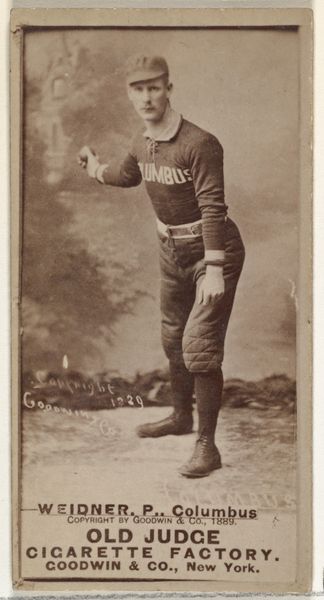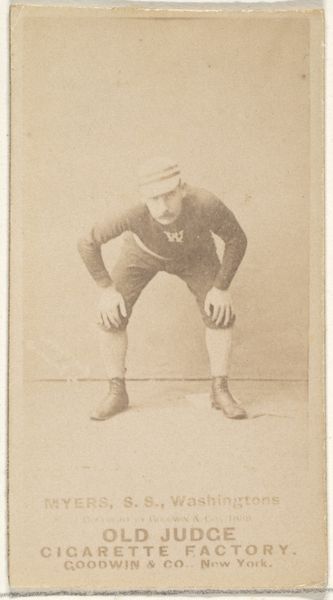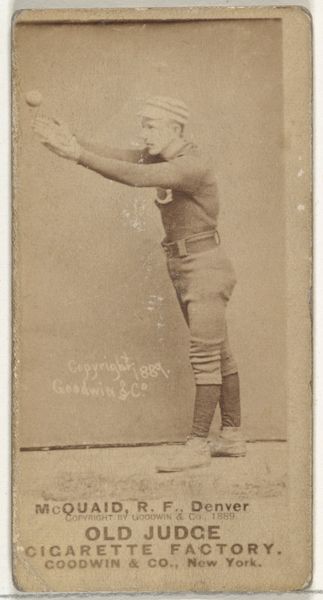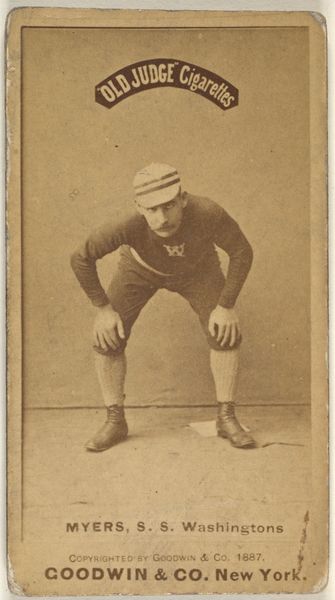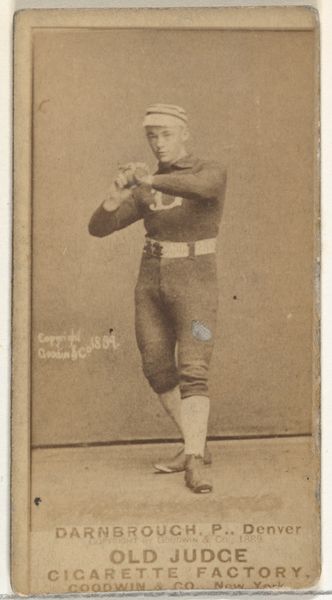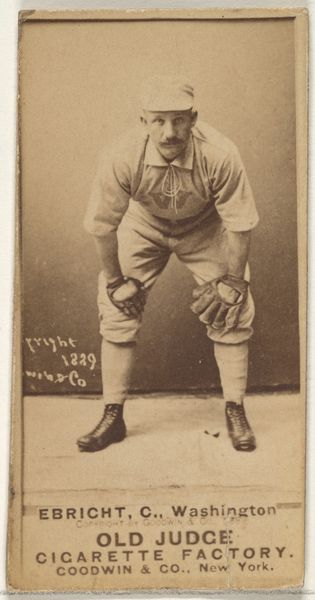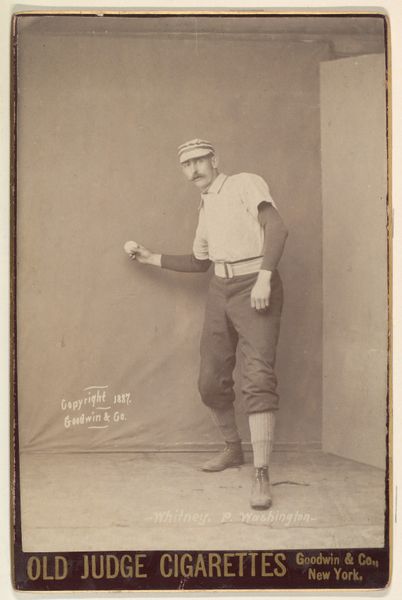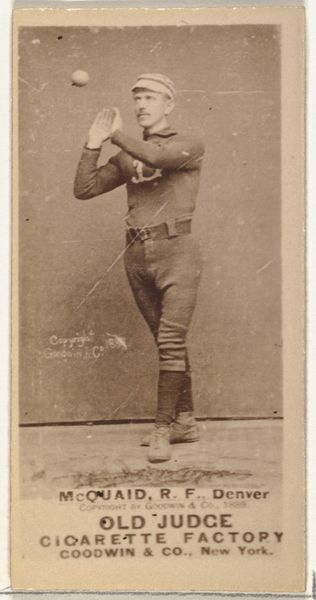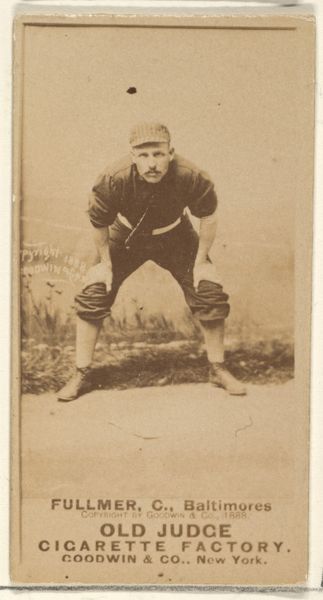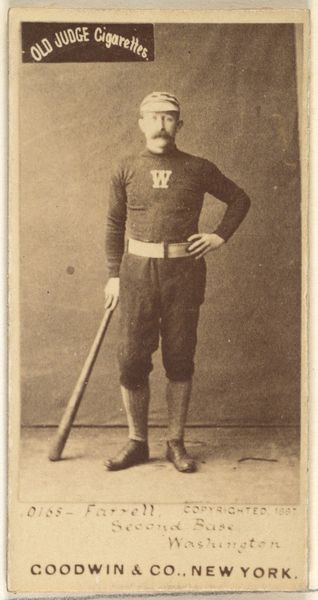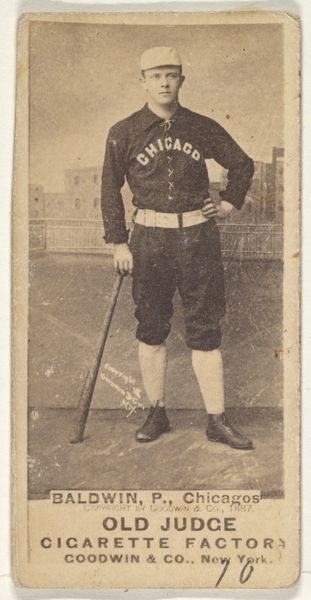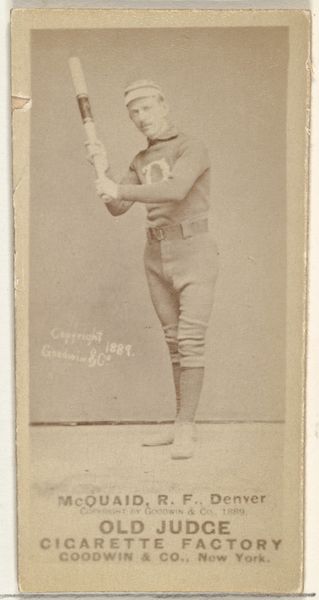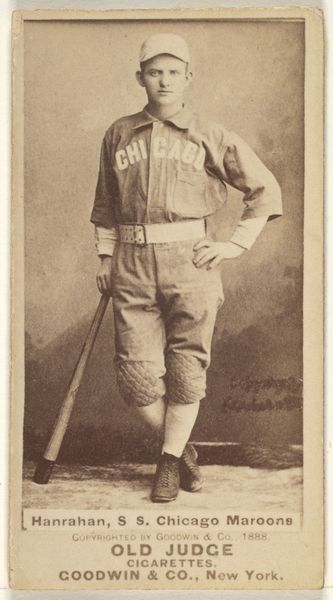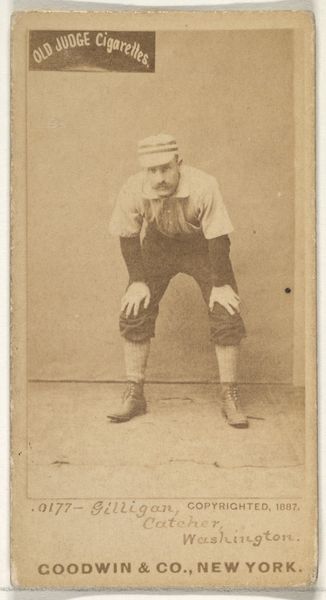
Hines, Center Field, Indianapolis, from the series Old Judge Cigarettes 1887
0:00
0:00
drawing, print, photography, gelatin-silver-print
#
portrait
#
drawing
# print
#
impressionism
#
baseball
#
photography
#
historical photography
#
gelatin-silver-print
#
men
Dimensions: sheet: 6 1/2 x 4 3/8 in. (16.5 x 11.1 cm)
Copyright: Public Domain
Curator: Here we have a gelatin-silver print from 1887 entitled, "Hines, Center Field, Indianapolis, from the series Old Judge Cigarettes," by Goodwin & Company. It resides here at The Metropolitan Museum of Art. Editor: There's such a melancholy to it. The sepia tones lend a timeless feel, and the ballplayer's expression seems a little somber. He’s standing stiffly in a studio; the backdrop has that sort of anonymous institutional quality. Curator: The photograph, part of a larger series produced to be included in Old Judge Cigarette packs, provides an important glimpse into the world of early professional baseball and the commercialization of sport. Editor: So, a proto-sports card. Thinking about the implications of associating sports figures with commercial products – and specifically, tobacco – in this era feels really complex, right? We're starting to see the commodification of athleticism and fame and its influence on how the players presented themselves. Were these athletes aware of how their image was being used to promote potentially harmful products? Did they benefit directly from the use of their likeness, or were their images simply appropriated? Curator: Absolutely. The production and distribution of these images occurred within a complex web of societal attitudes toward smoking, sport, and advertising. It really reveals a cultural landscape in transition. Also, beyond the issues around commerce, these prints offer insight into representation itself: who was deemed worthy of capturing and preserving? Editor: Yes. In the broader context of late 19th-century portraiture, how does this image both uphold and subvert existing conventions? While adopting the formality of studio portraiture, it simultaneously democratizes the form by depicting a sports figure rather than a member of the traditional elite. The use of baseball imagery became hugely pervasive in late 19th century popular culture. What would a period eye have made of the combination of that imagery and commerce? Curator: These photos humanize figures elevated to near mythological status. Viewing them today allows us to consider how celebrity culture and marketing intertwine and perpetuate within social fabrics. Editor: It certainly gives pause, reflecting on those historical tensions between athleticism, profit, and public perception. A lot to consider, looking back. Curator: Indeed, a fascinating snapshot of a burgeoning era, both on and off the field.
Comments
No comments
Be the first to comment and join the conversation on the ultimate creative platform.
